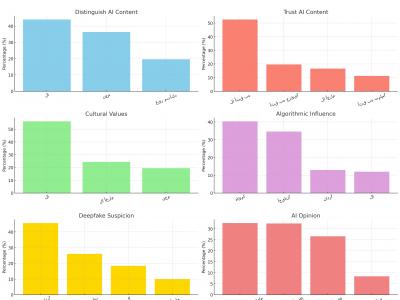Datasets
Standard Dataset
BEET-M Quadrant-Mapped Verbs: A Fuzzy and binary Dataset of 9,000 English Verbs for Emotional and Behavioral Influence Modeling
- Citation Author(s):
- Submitted by:
- Wael Maged Badawy
- Last updated:
- Mon, 04/21/2025 - 14:13
- DOI:
- 10.21227/43aj-8319
- Data Format:
- License:
Abstract
This dataset presents a curated collection of 9,000 English verbs annotated with normalized fuzzy values across four cognitive-behavioral quadrants of the BEET-M (Behavior Engagement Emotion Trigger Modes) model: Value & Credibility (NW), Relationship & Human Impact (NE), Process & Information (SE), and Time Urgency (SW). Each verb is assigned fuzzy scores summing to 1.0, along with a corresponding binary vector marking its dominant influence quadrant. This dataset supports applications in affective computing, persuasive communication, human-computer interaction, and natural language processing, particularly for emotionally adaptive systems and context-aware word scoring.
The dataset contains 9,000 rows with the following columns:
ColumnDescriptionVerbBase form of an English verbNW_fuzzyNormalized fuzzy score for Value & Credibility quadrantNE_fuzzyNormalized fuzzy score for Relationship & Human Impact quadrantSE_fuzzyNormalized fuzzy score for Process & Information quadrantSW_fuzzyNormalized fuzzy score for Time Urgency quadrantNW_binary1 if NW has the highest fuzzy score for the verb, else 0NE_binary1 if NE is dominantSE_binary1 if SE is dominantSW_binary1 if SW is dominant
All fuzzy scores are generated using a controlled random distribution normalized to sum to 1. Binary flags are computed using argmax() logic.
Experimental Design, Materials and Methods
Data Source
We extracted verb forms from the open-source verbs-all.csv dataset, which includes base forms and conjugations. After deduplication and cleaning, the first column of each row (base form) was selected.
Fuzzy Value Generation
Each verb is assigned four fuzzy values generated using NumPy’s random distribution function and normalized across four dimensions:
pythonنسختحريرfuzzy = np.random.rand(4)
normalized = fuzzy / fuzzy.sum()
Binary Labeling
The quadrant with the highest fuzzy value was marked with a binary flag:
pythonنسختحريرdominant = np.argmax(normalized)
binary = [1 if i == dominant else 0 for i in range(4)]

 11 Views
11 Views








